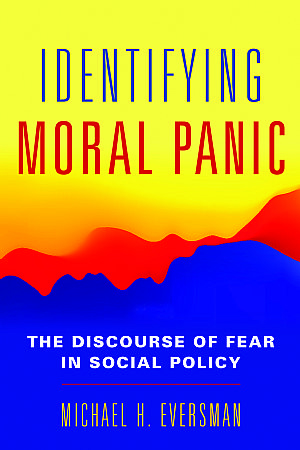
Michael H. Eversman was inspired to write a book that bridges the framework of moral panic with professional social work while using its ideas to examine social welfare policy in the contemporary United States.
“In doing so I also wanted to shed light on the historic and still current harsh treatment our policies too often impose on so-called ‘folk devils,’” he says. This includes highly vulnerable groups and client populations that social workers have traditionally worked with and advocated for.
“As a formal theory, moral panic is 50 years old,” says Eversman, who is an associate professor at the Department of Social Work at Rutgers University-Newark. “But its core concepts remain relevant today for helping us understand how and why society (and policymakers) react to social problems as we do.”
His NASW Press book, “Identifying Moral Panic: The Discourse of Fear in Social Policy,” can help social workers, including practitioners interested in social justice, understand how policies impact clients from marginalized groups and communities.
Social work educators who teach policy, macro practice, and any course that emphasizes structural and institutional discrimination and racism, and students who want a concise but thorough and readable primer on social welfare policy in the U.S, also will gain insight from the text.
“Moral panic makes for interesting reading and the book will appeal to anyone interested in contemporary pop culture, media studies, social problems, and of course policymaking,” Eversman says. “To this end, I believe that many who read the book will find themselves surprised and at times even dismayed by some of the policies we have enacted over the years....”
Among the key takeaways, he says, is learning that as a society we worry about and act upon social problems that are unlikely to harm us while we tolerate and even accept other social problems that we should be worried about and trying to address.
The book points out the ways media and political discourse empower and inflame the labeling language that creates and reinforces societal stigma and social inequalities. It also explains how susceptible humans are to their own biases.